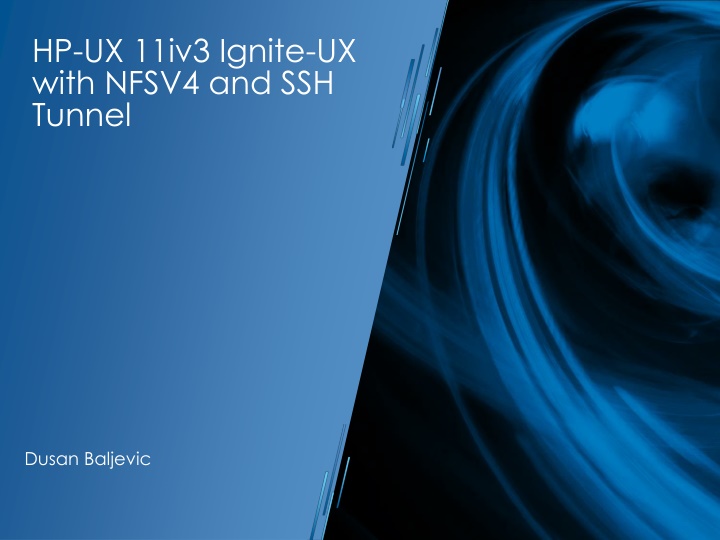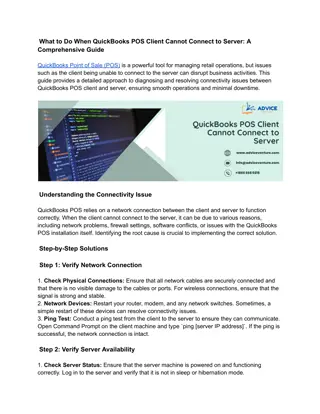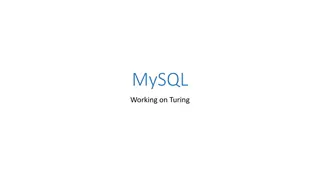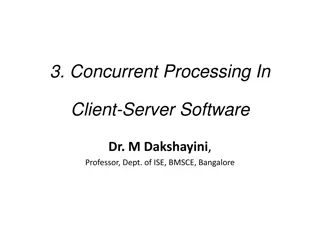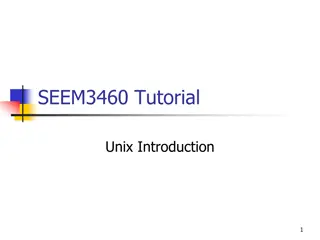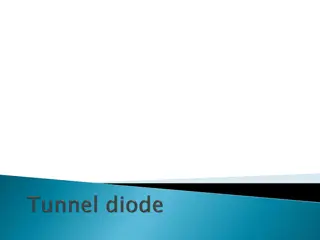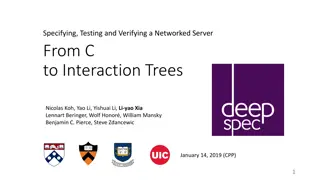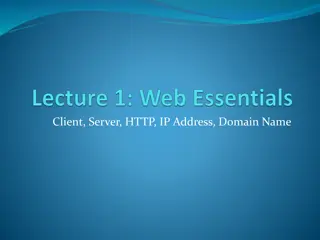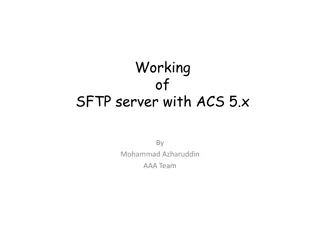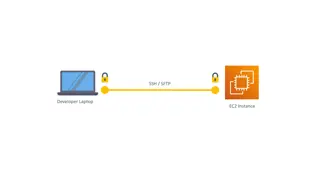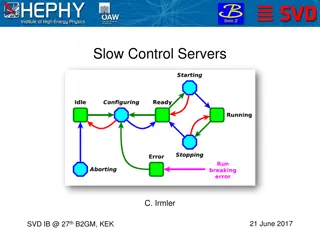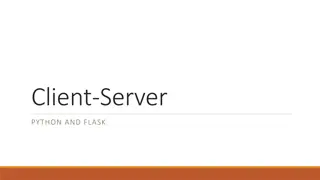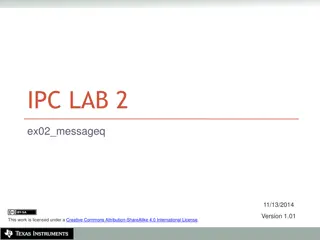Setting Up Ignite-UX Server and Client with NFSv4 and SSH Tunnel on HP-UX 11iv3
Learn how to configure an Ignite-UX server and client on HP-UX 11iv3 using NFSv4 with an SSH tunnel for a secure environment. This presentation covers the setup process, equipment requirements, and the benefits of using NFSv4 in disaster recovery scenarios.
Download Presentation

Please find below an Image/Link to download the presentation.
The content on the website is provided AS IS for your information and personal use only. It may not be sold, licensed, or shared on other websites without obtaining consent from the author.If you encounter any issues during the download, it is possible that the publisher has removed the file from their server.
You are allowed to download the files provided on this website for personal or commercial use, subject to the condition that they are used lawfully. All files are the property of their respective owners.
The content on the website is provided AS IS for your information and personal use only. It may not be sold, licensed, or shared on other websites without obtaining consent from the author.
E N D
Presentation Transcript
HP-UX 11iv3 Ignite-UX with NFSV4 and SSH Tunnel Dusan Baljevic
Overview This short technical presentation will show: Setup of Ignite-UX server and client running HP-UX 11iv3 by using NFSv4 with SSH tunnel Assumptions: Basic knowledge of Ignite-UX, SSH, and NFS on HP-UX platform The equipment used: rx7420 and rx2660 running HP-UX 11iv3 Update 1203 Ignite-UX server hostname is ignserv Ignite-UX client hostname is hpclient Both servers run HP-UX DCOE, OpenSSH 6.0p1 (GR8 Call 4000252191 opened for Secure Shell on HP-UX), Ignite-UX C.7.14.264, ONC/NFS B.11.31.13 Network between the servers is plain 100 Mbs segment, the servers use single network cards (no APA) Default kernel tuning was used
Secure Shell 5.9p1 Still a Problem Even the latest version of HP-UX 11iv3 1209 DCOE with its Secure Shell has the same bug. I tested it in early September 2012. The same hung-session problem occurred when using: # swlist | egrep "\-OE" HPUX11i-DC-OE B.11.31.1209 HP-UX Data Center Operating Environment # ssh -V OpenSSH_5.9p1+sftpfilecontrol-v1.3-hpn13v12, OpenSSL 0.9.8w 23 Apr 2012 HP-UX Secure Shell-A.05.90.007, HP-UX Secure Shell version So, at this stage, open-source version of SSH is still required on the Ignite-UX client side. The Ignite-UX server side uses standard Secure Shell that comes with HP-UX distribution.
Why This Presentation? Secure environment to run Ignite-UX when only SSH is allowed between servers; An alternative solution to run Ignite-UX, which was not documented before; An opportunity to use new features through NFSv4; The flexibility of tools available on HP-UX 11iv3; Simple and robust solution for Disaster Recovery O/S backups in secure environments.
Why NFSv4 with SSH Tunnel With HP-UX 11i we support Kerberos encryption with all NFS-versions (NFSv2, NFSv3, and NFSv4); This would possibly be faster than port forwarding with SSH, but the NFS ports would still need to be opened between two servers; With NFSv4 and SSH tunnel, a new method is possible, where Ignite- UX and pre-mounted file systems (NFS) can be used. In this case, we will use localhost as target for saving the O/S image: make_net_recovery s localhost ...
Setting NFSv4 on Ignite-UX Server Edit /etc/rc.config.d/nfsconf. The only important options are: NFS_CORE=1 LOCKMGR=1 * NFS_SERVER=1 NFS_CLIENT=0 START_MOUNTD=1 Edit /etc/default/nfs and change the following options from the defaults: NFS_SERVER_VERSMAX=4 NFS_CLIENT_VERSMAX=4
NFSv4 Delegation * /etc/default/nfs option (NFS_SERVER_DELEGATION=on). NFSv4 is designed to use a single source-port 2049. If there is a firewall between NFS client and NFS-server, it is sufficient to open port number 2049. With the introduction of NFSv4 delegation, the NFS-server need to be able to revoke a granted delegation. This is done via a special connection/protocol and requires an additional port to be opened. The communication is done from the NFS-server to the NFS-client, and the destination port of this connection is announced/sent by the NFS-client, when the NFSv4 file system is been mounted. The port-number that is currently used can be any port between 49152 and 65535 and is handled by the NFSv4 callback-daemon "nfs4cbd at the NFS-client. If the firewall blocks the callback-communication, the NFS-client and NFS-server will disable the delegation feature for this client, which may impact NFSv4 performance (does not impact NFSv4 functionality).
Setting NFSv4 on Ignite-UX Server cont. Edit /etc/dfs/dfstab to share two file systems to a remote Ignite-UX client (hostname hpclient). It is CRUCIAL to list both the Ignite-UX server and client in the access list: share -F nfs -o anon=2,access=ignserv:hpclient /var/opt/ignite/clients share -F nfs -o anon=2,access=ignserv:hpclient /var/opt/ignite/recovery/archives/hpclient Warning: If you do not put the Ignite-UX server above, the client will report the following error in /var/adm/syslog/syslog.log: Aug 28 17:47:12 hpclient vmunix: WARNING: NFS server initial call to localhost failed: Permission denied
Setting SSH on Ignite-UX Server Edit /usr/local/etc/sshd_config. The only important changes from the defaults are: Protocol 2,1 ClientAliveInterval 15 ClientAliveCountMax 10 ClientAliveInterval sets a timeout interval in seconds after which if no data has been received from the client, sshd(8) will send a message through the encrypted channel to request a response from the client. The default is 0, indicating that these messages will not be sent to the client. This option applies to SSH protocol version 2 only.
Setting SSH on Ignite-UX Server cont. ClientAliveCountMax Sets the number of client alive messages which may be sent without sshd receiving any messages back from the client. If this threshold is reached while client alive messages are being sent, sshd will disconnect the client, terminating the session. It is important to note that the use of client alive messages is very different from TCPKeepAlive (below). The client alive messages are sent through the encrypted channel and there- fore will not be spoofable. The TCP keepalive option enabled by TCPKeepAlive is spoofable. The client alive mechanism is valuable when the client or server depend on knowing when a connection has become inactive. The default value is 3. If ClientAliveInterval is set to 15, and ClientAliveCountMax is 10, unresponsive ssh clients will be disconnected after approximately 150 seconds.
Setting NFSV4 on Ignite-UX Client Edit /etc/rc.config.d/nfsconf. The only options required are: NFS_CORE=1 LOCKMGR=1 * NFS_CLIENT=1 Edit /etc/default/nsf and change the following options from the defaults: NFS_SERVER_VERSMAX=4 NFS_CLIENT_VERSMAX=4
SSH Tunnel On Ignite-UX Client Set up SSH tunnel to Ignite-UX server. We used local port 2323 (can be any free port on the local machine) : # /usr/local/bin/ssh -fN -L 2323:ignserv:2049 ignserv It means we established an SSH tunnel by using local port 2323 to tunnel requests to remote server ignserv on port 2049.
Create Directory on Ignite-UX Client # mkdir -p /var/opt/ignite/recovery/client_mnt # chown bin:bin /var/opt/ignite/recovery/client_mnt # mkdir /var/opt/ignite/recovery/arch_mnt # chown bin:bin /var/opt/ignite/recovery/arch_mnt
Change Commands on Ignite-UX Client Once the tunnel is established to a remote Ignite-UX server, the following TEMPORARY command changes are required: # mv /sbin/mount /sbin/mount.IGN # mv /sbin/umount /sbin/umount.IGN # ln s /usr/bin/true /sbin/mount # ln s /usr/bin/true /sbin/umount # cp /opt/ignite/bin/save_config /opt/ignite/bin/save_config.IGN # sed -e 's/^mount -lp/mount.IGN -lp/g /opt/ignite/bin/save_config \ > /opt/ignite/bin/save_config.new # mv /opt/ignite/bin/save_config.new /opt/ignite/bin/save_config
QXCR1001169724 Ignite-UX with pre- mounted NFS To enable the migration of systems in secure environments this request asks for a method of telling make_net_recovery to not NFS mount file systems and write the configuration and archive to local disks. The general requirement is that make_net_recovery allow the use of no NFS file systems. That is: it will write the configuration and archive to a the local file system instead of a remote NFS file system. http://psweb1.cup.hp.com/~projects/pq/cgi- bin/goto_cr.cgi?number=QXCR1001169724&results_format=default&t z=PDT&submit=submit
NFSv4 Mounts on Ignite-UX Client Once the tunnel is established to a remote Ignite-UX server, two NFSv4 file systems must be mounted on the client. We used local port 2323 (can be any free port) and remote Ignite-UX server is hostname ignserv: # /sbin/mount.IGN -o port=2323,vers=4 \ localhost:/var/opt/ignite/clients /var/opt/ignite/recovery/client_mnt # /sbin/mount.IGN -o port=2323,vers=4 \ localhost:/var/opt/ignite/recovery/archives/hpclient \ /var/opt/ignite/recovery/arch_mnt
Ignite-UX Backups on Client localhost is used for make_net_recovery: # make_net_recovery -s localhost -P s -x inc_entire=vg00 x \ exclude=/tmp -x exclude=/var/tmp -d "Archive_of_hpclient_via_NFSv4
Ignite-UX Client NFS Mounts # bdf Filesystem kbytes used avail %used Mounted on /dev/vg00/lvol3 2097152 686912 1399336 33% / /dev/vg00/lvol1 2097152 253368 1829440 12% /stand /dev/vg00/lvol8 12288000 2655544 9557288 22% /var /dev/vg00/lvol10 2097152 20376 1949780 1% /var/tmp /dev/vg00/lvol9 4194304 18008 3915285 0% /var/adm/crash /dev/vg00/lvol7 12288000 3759744 8461736 31% /usr /dev/vg00/lvol6 1048576 21088 1019464 2% /tmp /dev/vg00/lvol5 18432000 8646536 9709152 47% /opt /dev/vg00/lvol4 524288 20848 499512 4% /home localhost:/var/opt/ignite/clients 16252928 4258160 11901208 26% /var/opt/ignite/recovery/client_mnt localhost:/var/opt/ignite/recovery/archives/hpclient 16252928 4258168 11901208 26% /var/opt/ignite/recovery/arch_mnt
Ignite-UX Backups on Client Ignite-UX backups of around 5.8 GB image took 58 minutes across 100 Mbs network segment (idle network) when using NFSv4 and SSH tunnel. Ignite-UX backups of around 5.8 GB image took 48 minutes across 100 Mbs network segment (idle network) when using NFSv4 without SSH tunnel. Through limited testing, it has been shown that SSH tunnel might decrease network throughput by up to around 20%. Through performance monitoring, it was found out that around 1.4 GB of RAM was used during Ignite-UX backups of 5.8 GB on the client. Through kernel, NFS and VxFS tuning, even better results would be expected.
Test 1 with TCP and Kernel Tuning The following changes were tested several times (results were close in timings): # ndd -set /dev/tcp tcp_recv_hiwater_def 1048576 (on server and client) # ndd -set /dev/tcp tcp_xmit_hiwater_def 1048576 (on server and client) # kctune -b yes nfs4_bsize=1048576 (on server and client) # kctune -b yes nfs4_max_threads=32 (on client) # kctune -b yes nfs4_nra=32 (on client) In addition, Tune-N-Tools optimization done on both servers. Ignite-UX backups of around 5.8 GB image took 74 minutes across 100 Mbs network segment (idle network) when using NFSv4 and SSH tunnel. The tuning did not achieve significantly positive results.
Test 2 with TCP and Kernel Tuning The following changes were tested several times (results were close in timings): # ndd -set /dev/tcp tcp_recv_hiwater_def 1048576 (on server and client) # ndd -set /dev/tcp tcp_xmit_hiwater_def 1048576 (on server and client) # kctune -b yes nfs4_bsize=1048576 (on server and client) In addition, Tune-N-Tools optimization done on both servers. Ignite-UX backups of around 5.8 GB image took 75 minutes across 100 Mbs network segment (idle network) when using NFSv4 and SSH tunnel. The tuning did not achieve significantly positive results.
Test 3 with TCP and Kernel Tuning The following changes were tested: # kctune -b yes nfs4_bsize=1048576 (on server and client) In addition, Tune-N-Tools optimization done on both servers. Ignite-UX backups of around 5.8 GB image took 75 minutes across 100 Mbs network segment (idle network) when using NFSv4 and SSH tunnel. The tuning did not achieve significantly positive results.
Change Commands on Ignite-UX Client Once backups are completed on the Ignite-UX client, the following TEMPORARY command changes must be removed: # rm /sbin/mount /sbin/umount # mv /sbin/mount.IGN /sbin/mount # mv /sbin/umount.IGN /sbin/umount # mv /opt/ignite/bin/save_config.IGN /opt/ignite/bin/save_config If a crash or a reboot happens while the Ignite-UX Backups are running, you must boot into single user mode and run the above commands before booting cleanly.
Ignite-UX Recovery archive_cfg file will contain wrong NFS source if you decide to try to restore it. Before unmounting the NFSv4, edit the file: /var/opt/ignite/recovery/client_mnt/hpclient/recovery/latest/archive_cfg and change the following statement accordingly: nfs_source="127.0.0.1:/var/opt/ignite/recovery/archives/hpclient" Or, on Ignite-UX server, the same file is in this location: /var/opt/ignite/clients/hpclient/recovery/latest/archive_cfg
Ignite-UX Recovery cont. The image is located on the Ignite-UX server. Standard Ignite-UX recovery or deployment procedure applies.
For More Information Ignite-UX Documentation http://www.hp.com/go/ignite-ux-docs NFS Services Administration Guide HP-UX 11iv3 http://h20000.www2.hp.com/bc/docs/support/SupportManual/c0323 1925/c03231925.pdf Shell script that automates the backup process: http://www.circlingcycle.com.au/Unix-sources/HP-UX-ignite-via- NFSv4-and-SSH-tunnel.sh.txt
